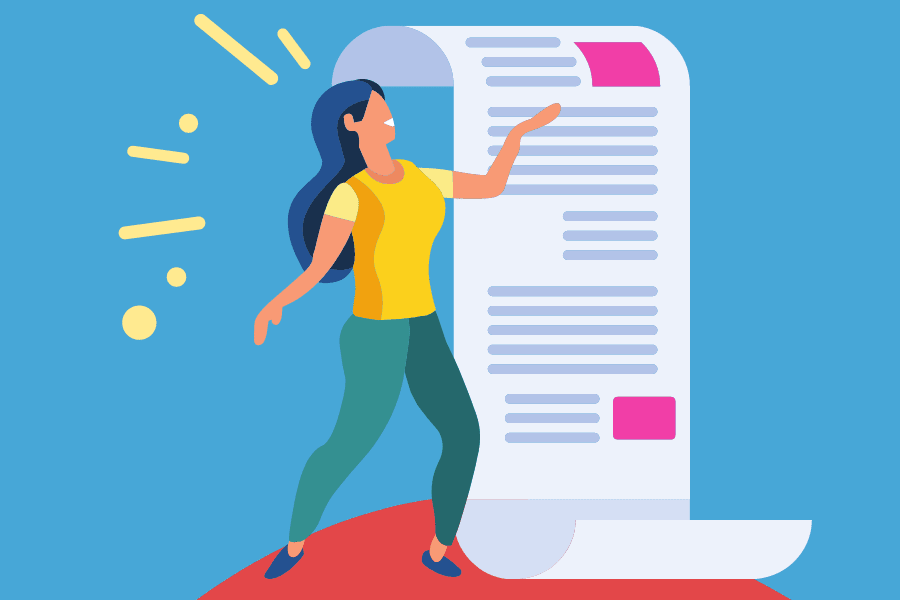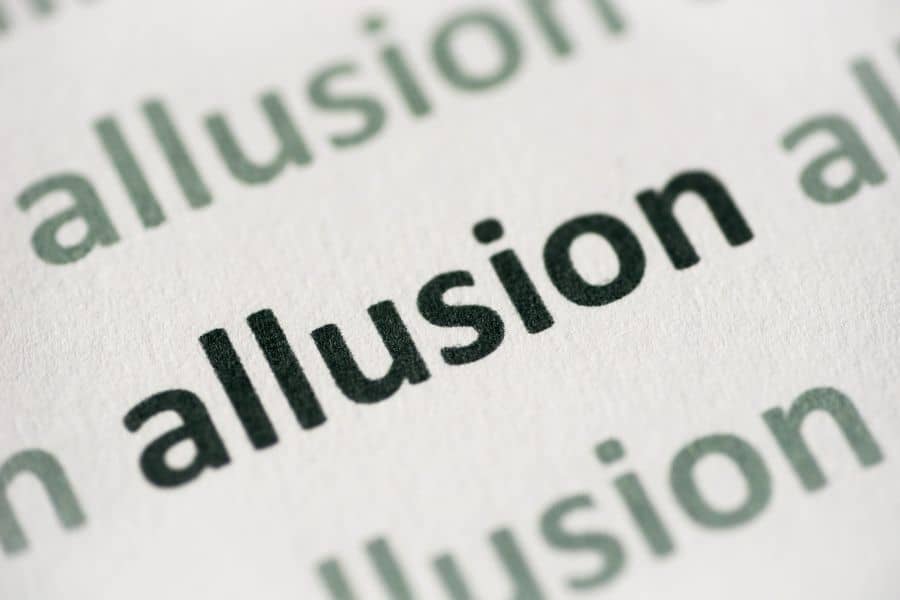If you want to make real money as a writer, you might consider direct response copywriting.
Not sure what it’s about? Well, you’re in the right place.
In this post, we’ll:
- Tell you exactly what direct response copywriting is.
- Show you why it’s is such a lucrative practice for freelance writers.
- Show you how a direct response sales letter is put together, the fine points that make it killer-effective, and examples of how superstar copywriters pull it off.
Ready to turbocharge your writing career? (And make some serious cash?)
Let’s get started.

What is Direct Response Copywriting?
Direct response copywriting is the truest form of advertising.
Unlike magazine, TV, and billboard ads — whose purpose is to create brand awareness — direct response copywriting is persuasive copy that gets readers to take immediate action, like:
- Subscribe to an airfare discount newsletter.
- Purchase an online course.
- Get in on an exclusive investment opportunity.
It’s the landing page you get to after clicking through an email, or tapping learn more on a social media ad.
But, how powerful is direct response copywriting?
Well, the iconic Madison Avenue adman David Ogilvy himself once confessed:
“Direct Response is my first love; later on, it became my secret weapon.“
Ogilvy cemented his legacy with magazine ads for Rolls Royce, Hathaway Shirts, and Schweppes.
But he cut his advertising teeth at the influence of mail-order masters like Claude Hopkins, John Caples, and Victor Schwab.
Consequently, he often asserted that if written copy didn’t produce an immediate result, it was a waste of time, effort, and the client’s money.
The following example from Hello Fresh makes his case:
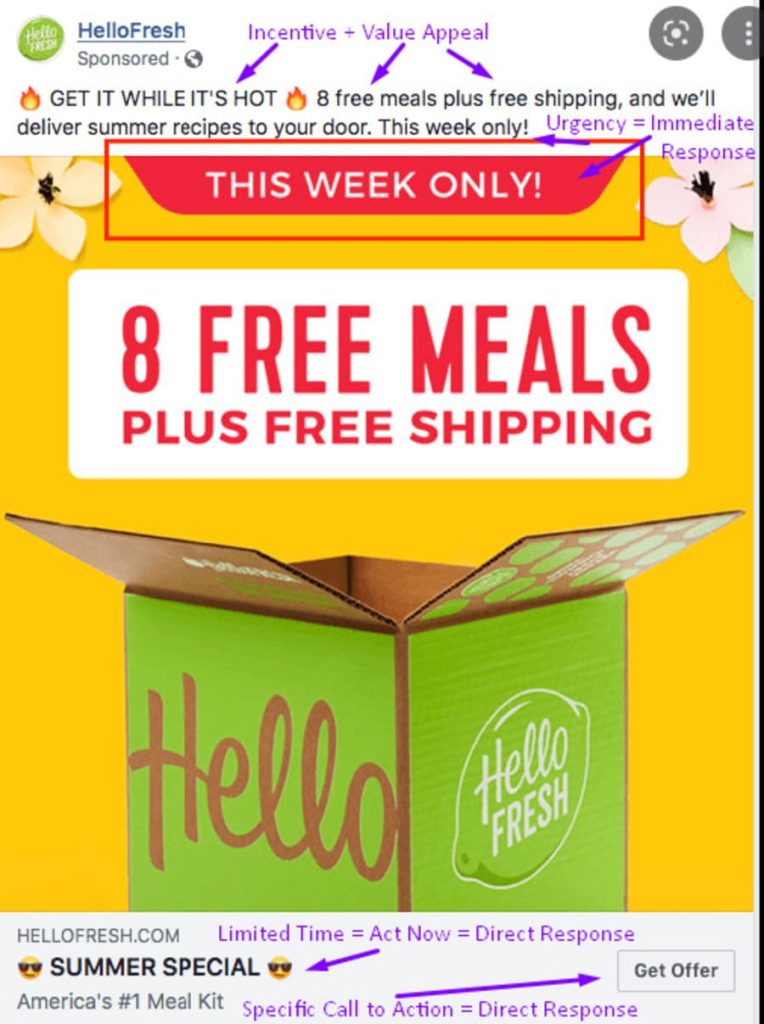
Most of us know that Hello Fresh is very good, easy-to-prep food, conveniently delivered to your door.
No need to sell that.
Instead, a potential customer sees a direct response pitch for what she’ll get, and why she should act now.
I’m guessing she probably took them up on the offer.
Immediate response, that ability to quickly convert ad spending to revenue, is why direct response copy is in a league of its own.
So are you Intrigued? It gets even better. Read on to find out more.
Why Every Writer Should Be a Direct Response Copywriter
Do you prefer to crack open your laptop at a Parisian cafe? Or begin your work day with ocean breezes scattering your work papers? Consider this:
“The most successful, wealthiest freelance writers are those who have mastered direct response copy.“
Why?
Well, we’ve identified one reason:
Direct marketing is very good at getting people to buy, immediately.
Reason #2?
It’s absurdly economical.
In the salad days of direct mail, direct response was an insanely low-cost way of advertising AND selling.
But with the growth of digital marketing, which costs pennies on the postal dollar, the value only increases.
Exponentially.
According to Rebecca Matter, President of American Writers and Artists Institute, direct response is a $2.3 trillion industry. Indeed, businesses everywhere use long-form sales letters to:
- Create qualified leads.
- Sell rare art, precious metals, and exclusive investments.
- Sell healthcare supplements.
- Launch new businesses and open new restaurants.
- Fill seminar seats.
- Sell travel packages, vacation homes, and foreign lifestyle ventures.
Simply put, the ROI on direct marketing rocks.
So, good for businesses.
But what about you?
When you write a direct response piece, you get paid for writing the letter, and you get a percentage (3-5%) of the revenue YOUR letter creates as royalties.
If the letter is selling hot, they keep running it, and you keep collecting royalties.
Sure, the client will bring other writers in, and test their letters against yours but if your letter stays #1, you keep collecting.
Make no mistake, writing direct response sales copy isn’t easy.
And learning it? Well, writing persuasively can seem like a foreign language.
It will take painstaking effort, study, and practice.
But, as famed copywriter and author Dan Kennedy (The Ultimate Sales Letter) has often said, it can be learned by anyone.
Interested?
Let’s see how it’s done.
Elements of a Successful Direct Response Sales Letter
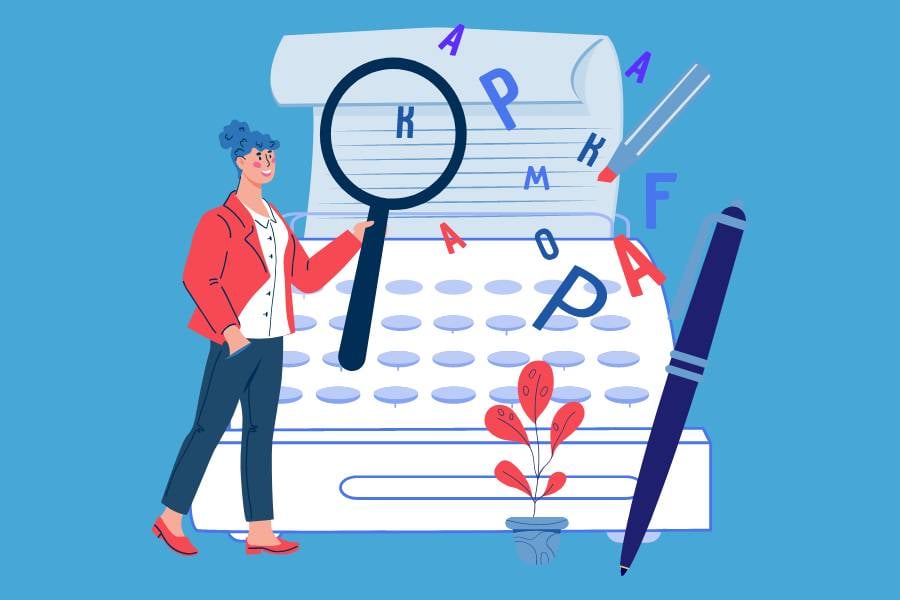
Direct response copywriting has been around for nearly 100 years.
Its perfected form, the sales letter, follows a formula formed from a single principle, encapsulated here by renowned copywriter, Michael Masterson:
“Every effective sale is made at two levels: an initial appeal, one based on deeply seated emotional factors, and a secondary appeal that is based on logic and consistency.”
Every element of the sales letter has a unique and vital function, and each will incorporate one or both of those appeals.
We’ll begin with the big idea.
The Big Idea
“…You will never find fame and fortune as a copywriter unless you can invent Big Ideas. The Big Idea attracts the reader, keeps the reader, and gets them to act on your copy.“
— David Ogilvy
Without a big idea, your sales letter will likely fail.
So, what is the big idea?
It’s the hook your sales letter will hang on. It’s a promise, a unique claim, a visceral appeal your reader will feel when they first read your copy.
So, how do you find your idea?
- Study your target audience. No cultural or demographic stone is left unturned.
- Focus on your reader’s core emotions — their hopes, dreams, fears, and beliefs.
- Write dozens upon dozens of possibilities until you know you have a winner.
What’s your winner? Ogilvy used five questions to decide:
- Does it make me gasp when I first see it?
- Do I wish I’d thought of it myself?
- Is it unique?
- Does it fit to perfection the overall strategy of the sales letter?
- Do I think it can last for 30 years? *
Yet, where do you find these ideas? Everywhere and anywhere.
For example:
Geico created an idiom from an expression in this brilliant campaign.
Here’s another big idea example from Bill Bonner, an entrepreneurial copywriter who founded Agora Publishing in 1978. He began the sales letter for his International Living newsletter with this:
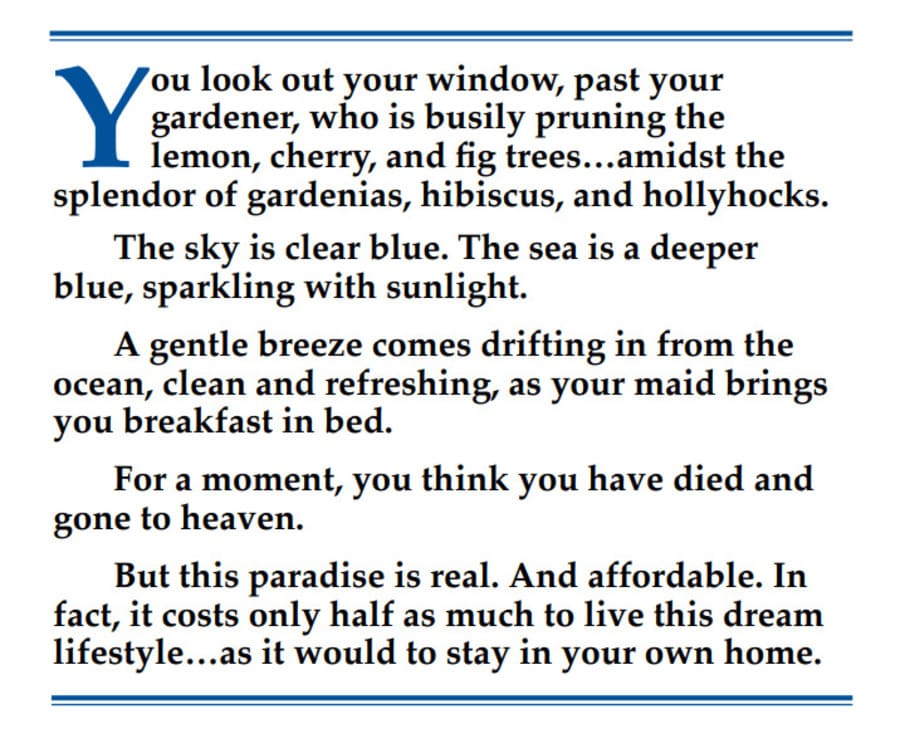
With an opening like that, who’s throwing that mail in the garbage?
You name the emotion, there’s a big idea there to spirit your sales letter. You’re limited only by imagination, and how well you know your target market.
The Teaser
The word conjures an image of nuisance, but nothing can be further from the truth. Without a great teaser, everything else is for naught.
Big idea included.
In the days of direct mail, the teaser was that loud mini-headline or hand-written note on the envelope, the promise of a $2 bill that spared the letter a trip to the waste basket.
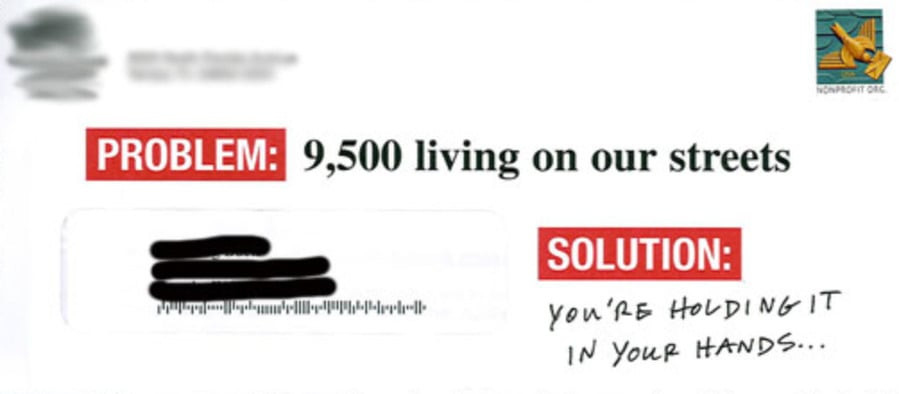
In email marketing, you’ll find the teaser in the subject line.
And in Facebook ads that promise better days ahead when you tap learn more.
Regardless of form, a good teaser grabs the reader’s attention and gets them to follow suit with curiosity or anticipation.
Yet, how is that done?
More than likely, there’s a promise or benefit.
For example, check out these teaser formulas from Robert W. Bly, one of the most successful direct response copywriters:
- Ask a Question. (“Wanna Reduce Your Car Insurance by 50%?”).
- Flatter the Prospect. (“For The Discriminating Art Buyer”).
- Make a Promise. (“Finish In a Year or Less”)
- Offer a Gift. (“Free Widget Enclosed”).
- Extend an Invitation. (“Your VIP Investor’s Invitation Enclosed”).
Teasers only seem like carnival barkers — in truth, they’re the drivers to any direct response copy.
The Headline
“The headline should be so good that it’s harder to move on from it than it is to read it.“
— Victor Schwab
So, what makes a headline great? We’ll begin with Sandy Franks, who offers the following acid test:
- Does the headline capture attention?
- Does it create fascination?
- Does it generate anticipation?
On top of that, a winning headline:
- Is simple and to the point.
- Stays with the promise (and benefits) made in the teaser and…
- Disarms the reader’s resistance.
Consider the following from the American Writers and Artists Institute (AWAI):

This headline does what it’s meant to do. It carries through on the promise made in the envelope’s teaser, and it gets right into the benefits.
That’s the trademark of an effective headline — staying consistent with what the reader is expecting.
So, not only does the headline keep the reader with you, but it also prepares them emotionally for the lead.
The Lead
Your sales letter will face two daunting obstacles:
- Convince someone you don’t know to buy something they’ve probably never heard of and…
- Do it without being there in person.
Overcoming these barriers is the function of the lead.
As a direct response copywriter, you can drill deeper into the core emotions that got the reader to click OR…
Develop the promise.
It’s already been hinted at in the teaser, stated boldly in the headline, and even stage-set by the big picture.
But now, it’s time for the promise, or promises, to be taken the distance, as Bill Bonner does here:
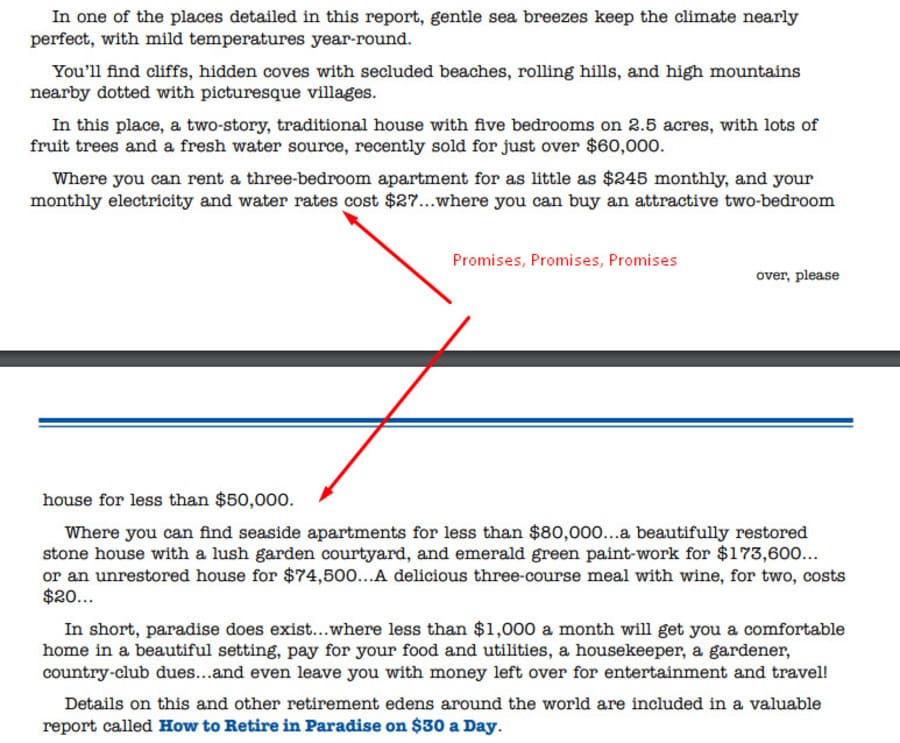
Yet how is this done? By:
- Maintaining emotional attention from the teaser and headline.
- Stating or implying an immediate benefit.
- Subtly evoking a negative feeling to stimulate a positive desire and…
- Heightening that desire to an irresistible level.
All of this can be accomplished subtly, using an approach called Indirection, a style of copy that steers clear of sales-speak and establishes trust without (a lot of) resistance from the reader.
The Sales Argument (Body Copy)
The body copy, or sales argument shifts the reader from the emotional investment she’s made in the lead to rationalizing her decision to buy.
You want a reader who KNOWS that the purchase is the right thing to do. So, you’ll make the last act of the buying process a very logical one by:
- Repeating the promise, and the benefits
- Breaking the promise down into claims
- Backing up your claims with irrefutable proof via testimonials, social proof (endorsements) and case studies
- Finally, you’ll offer an easy, no questions asked guarantee.
That’s the sales argument.
As a direct response copywriter, you’ve taken the reader on quite a journey.
But now it’s time to move the reader towards the close.
The False Close
By now, the reader has read several pages of direct response copy and believe they’re at a point where it’s time to click on a button, fill out a form, or make a phone call.
But that will come shortly.
First, you want them to feel certain their logic hasn’t failed them.
So, what’s your next move?
You make it easy for them to feel certain.
Enter the false close — an unexpected benefit offered at the end of the body copy.
Common examples include the “But wait, there’s more…” we hear in infomercials, or the bonuses that come with the online course we’re buying.
The false close isn’t just a sweetener, it’s relationship-building 101 as the goal of your sales letter isn’t the successful completion of THIS transaction…
It’s an ongoing relationship, one that had its beginnings in a sensitive, value-intensive, well-written sales letter.
The Close & Call to Action

So, mission accomplished, it’s time to consummate things and move on to the real close…
Empathize Your Value
Before we discuss terms, we’ll dissolve any hesitancy by emphasizing value, convenience, and peace of mind.
Bob Bly offers a few ways to do this:
- Point out the price value of memberships.
- Show the reader that what they’re paying is a drop in the bucket compared to the cumulative value of what they’re getting.
- Offer super-easy payment plans (and a discounted paid-in-full price).
- Remorse-proof the transaction by re-emphasizing the Zero-Risk guarantee and free-look period.
Call the Reader to Action
Hesitancy removed, all indicators are positive, the time to act is NOW.
Your job?
Emphasizing the wisdom of capturing the opportunity, before the opportunity disappears.
So, your call to action (CTA) will be:
- Crystal-clear
- Urgency-driven
- Present-specific
- Desire-oriented
For example:
- “Reserve My Exclusive Membership Today!”
- “Claim My Spot!”
- “Enroll Me Now!”
- “Explore Your International Lifestyle Today!”
Never forget that the CTA is an opportunity to reinforce the reader’s decision, both logically and emotionally.
Clearly State Your Terms
Believe it or not, your reader’s still looking for an excuse to click away or put the letter down.
So important work remains — a smooth execution of the terms of this transaction.
Great direct response copywriters state the terms completely, concisely, and in a tone that’s consistent with the sales letter copy.
So state:
- the readers guarantee (and what bonuses are theirs to keep if they change their mind).
- the free-look period, and EXACTLY how the reader will be refunded if they’re not delighted with their decision.
Equally, don’t be afraid to repeat yourself here.
Congratulations!
You’ve written a winning sales letter.
Just One More Thing
Thought you were done, didn’t you?
The sales letter really isn’t complete without a P.S.
The P.S. is a chance to reiterate your big idea.
A final sweetener and reminder of how easy it is to pay for everything, with an assurance of the guarantee and how they’ll be refunded.
It’s a parting nudge to act now while supplies last, before the deadline comes and goes.
The P.S. (and even a P.P.S.) IS your last exchange with the reader. Never fail to use it.
Tips From the Pros

These morsels of advice come from some very successful practitioners of direct response copywriting. I hope you find their words of wisdom helpful as you follow your writer’s journey.
Alex Cattoni, Founder, Copyposse.com
“I never want someone reading my copy to feel like it was a waste of their time. I want them to leave feeling inspired, educated, entertained by what I’ve written.“
Rebecca Matter, President, American Writers and Artists Institute
“Every institution or enterprise is selling something. This is your opportunity to do well for yourself by writing compelling copy AND helping others achieve that goal.“
Mindy McHorse, Editor, Barefoot Writer Magazine
“You’re on a LONG learning journey. Get comfortable with that, because even the most effective direct response copywriters feel they have much to improve upon.“
Tim Stoddart, CEO, Copyblogger.com
“Embrace long form copy. Who reads all that copy? Buyers do. It seems counter-intuitive, but the data is pretty clear. Long copy works.”
Guillermo Rubio, Copy Chief and Instructor, American Writers and Artists Institute
“You can be the best writer in the world… but if you don’t actually work at it, you’ll always be waiting for your day to arrive.”
Nicki Krawczyk, Founder, Filthy Rich Writer
“What is copywriting language? It’s language that the target audience will relate to.”
Direct Response Copywriting: Sound Like You?
So, this is direct response copywriting.
Hopefully, you have a better sense of how and why great sales letters come together the way they do.
Direct response copywriting is a wonderful art form. It’s super-challenging, but you can make a very nice living doing it, so…
If you’re thinking this might be your thing, dive in!
And someday, I’ll be clicking the order form from a letter you wrote.
Be well, and good luck.


